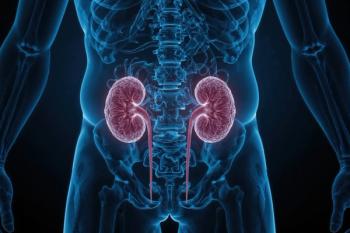
Fluorescent Probe Created to Better Analyze Chemicals Behind Depression
Chinese scientists recently created a dual-response fluorescent probe to better understand the pathological mechanisms of depression disorder.
In a recent study out of Fujian Normal University and the Second Affiliated Hospital of Fujian University of Traditional Chinese Medicine in Fuzhou, China, scientists created a dual-response fluorescent probe to analyze the vesicular exocytosis of noradrenaline (NE) in a cell culture environment. With this fluorescent probe system, they hoped to gain insight into the pathological mechanisms of depression disorder and ease the diagnosing and tracking of the disease. Their findings were published in Spectrochimica Acta Part A: Molecular and Biomolecular Spectroscopy (1).
According to the World Health Organization, approximately 3.8% of the world’s population, or approximately 280 million people, suffer from depressive disorder (2). This disorder can affect people from all walks of life, with more than 700,000 people dying from suicide every year; in fact, suicide is said to be the fourth leading cause of death in 15–29-year-olds. Symptoms of the condition can include sadness, loss of pleasure, sleep disorders, and inappetence. However, the disorder’s complicated pathogeny has led to a rudimentary knowledge of the condition. To reliably measure this condition, tools would need to dynamically observe the course of depression in real-time; this would allow for the disease to be properly diagnosed and monitored, while also allowing for the development of treatment strategies.
Noradrenaline (NE), being one of the key catecholamine neurotransmitters in the central and sympathetic nervous system, has critical influence on how and when depression occurs. Typically, depression is related to the vesicular exocytosis of NE rather than the intracellular concentration of NE. The former process typically relies on calcium ions, which are also used to reduce viscosity and enable smooth vesicle movements. This led to the inference that cell viscosity influences NE exocytosis, meaning that developing a method for simultaneously detecting NE and viscosity would be highly beneficial for depression research.
Read More:
Following this inference, the scientists designed and synthesized a dual-response fluorescent probe made of a rhodol-isophorone and a thioester group (RHO-DCO-NE). This probe, according to the scientists, can simultaneously detect NE concentration and viscosity levels, all with negligible crosstalk between the two channels. The rhodol-isophorone derivative serves as a fluorescent core and works as a viscosity-sensitive unit, where a rotatable unsaturated double bond remains. As for the thioester group, it is used as an NE-specific responsive group. Using this probe, the scientists studied the effects of viscosity changes on the NE release of PC12 and corticosterone-induced PC12 cells. The experiment’s data showed that by reducing viscosity levels, the release of NE of depression cell models can be accelerated. These insights provide new revelations into how the pathological mechanisms of depression function, which can potentially help in properly diagnosing and treating the disorder.
References
(1) Xiong, X.; Qiu, J.; Fu, S.; Gu, B.; Zhong, C.; Zhao, L.; Gao, Y. A Dual-Response Fluorescent Probe for Norepinephrine and Viscosity and Its Application in Depression Research. Spectrochim. Acta Part A: Mol. Biomol. Spectrosc. 2024, 315, 124270. DOI:
(2) Depressive Disorder (Depression). World Health Organization 2023.
Newsletter
Get essential updates on the latest spectroscopy technologies, regulatory standards, and best practices—subscribe today to Spectroscopy.




